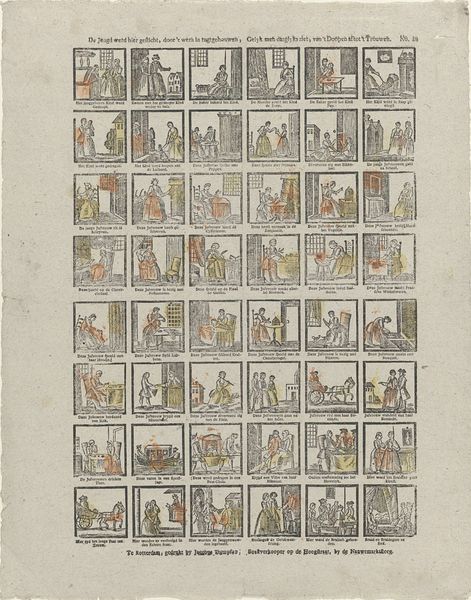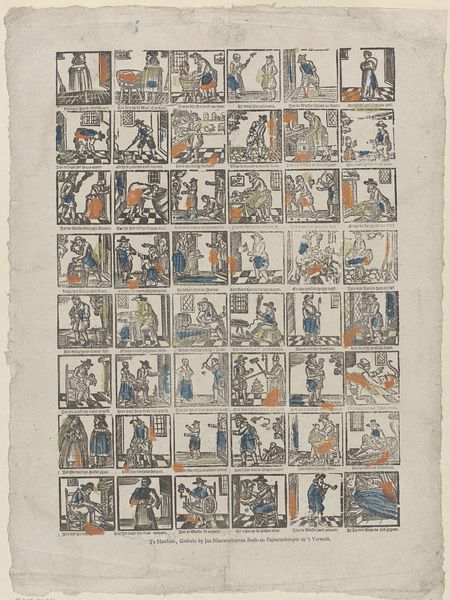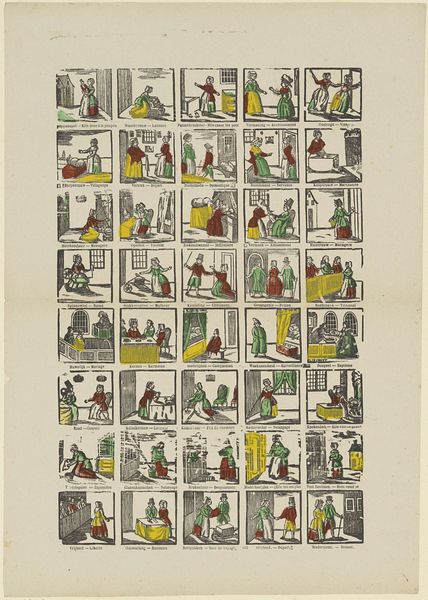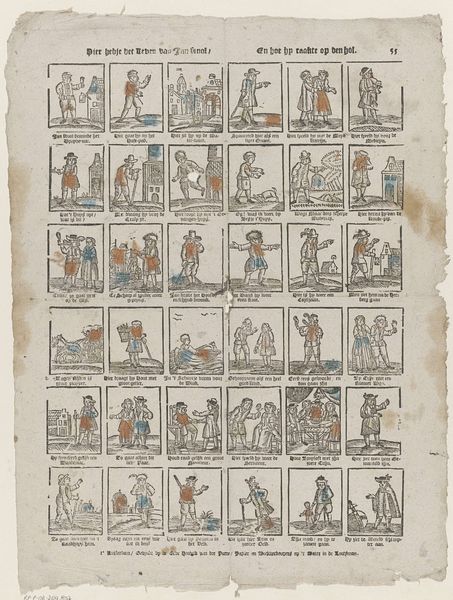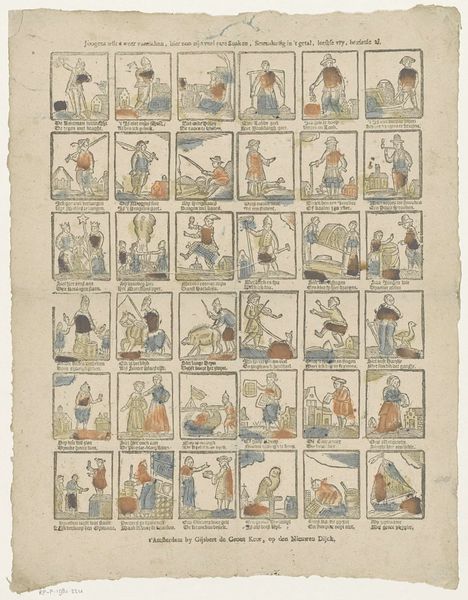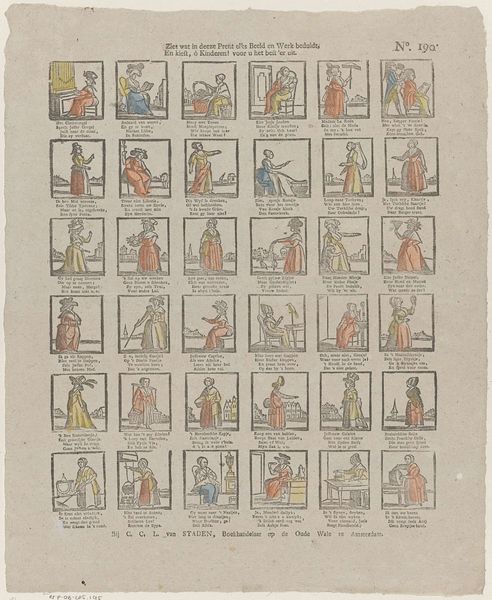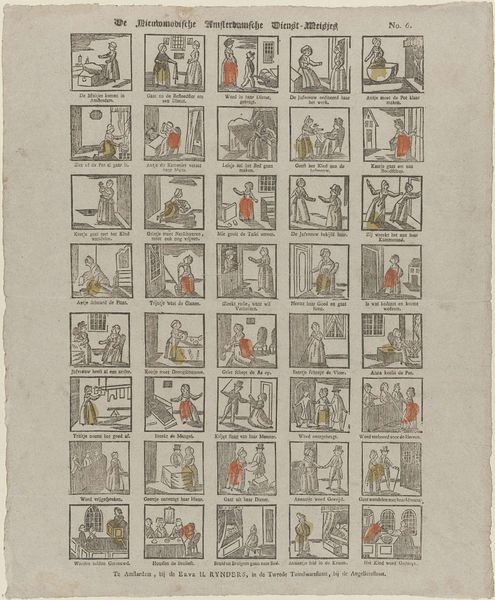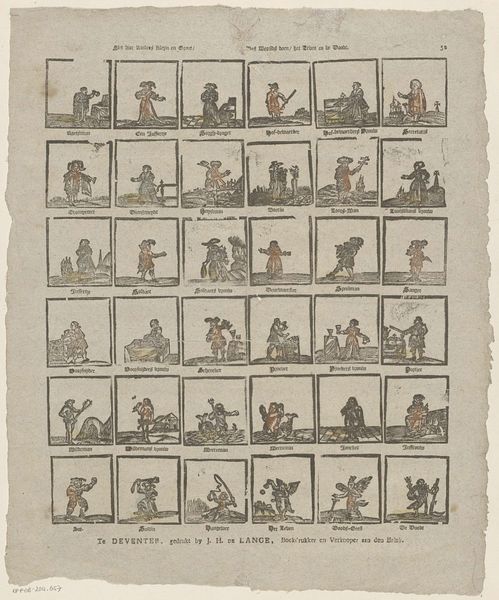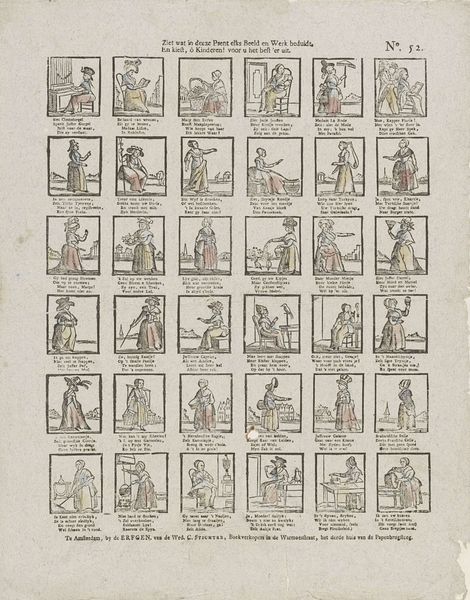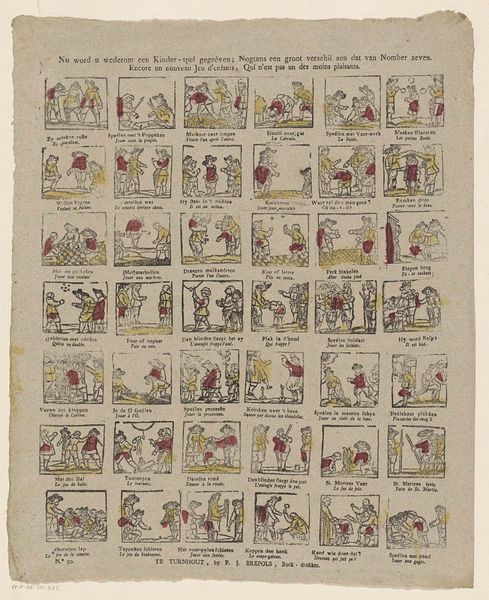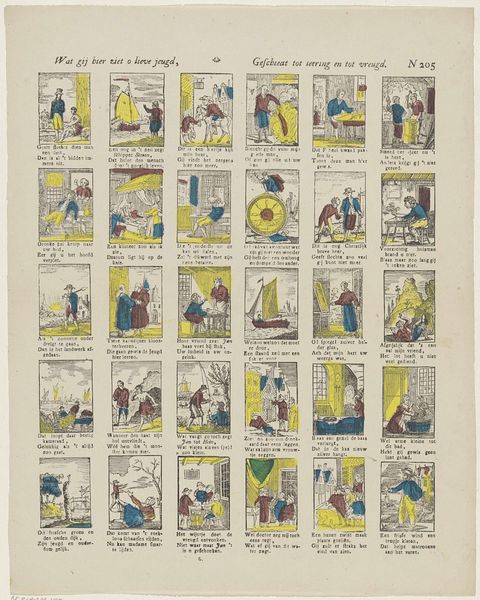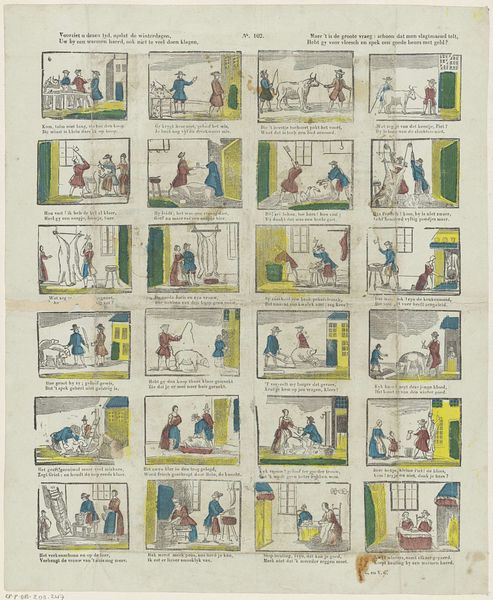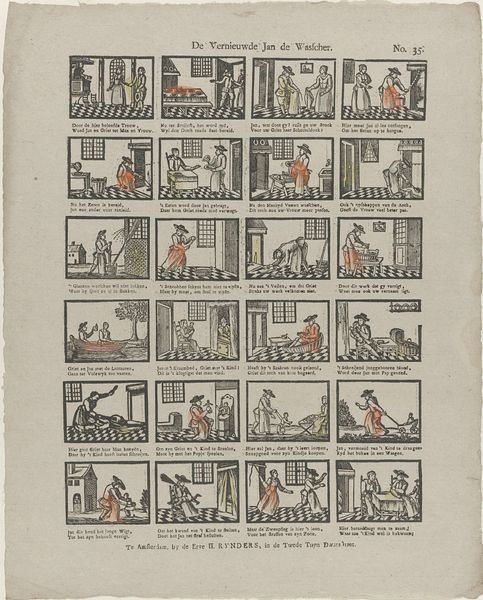
#
comic strip sketch
#
narrative-art
# print
#
folk-art
#
genre-painting
Dimensions: height 391 mm, width 297 mm
Copyright: Rijks Museum: Open Domain
Editor: Here we have "Life of a Woman" by Glenisson & Van Genechten, made sometime between 1833 and 1900. It’s a print showing the stages of a woman's life in little squares, kind of like a comic strip. I’m struck by how simple and repetitive some of the imagery is – domestic labor features pretty prominently. What does this kind of imagery tell us? Curator: The method of production speaks volumes. Consider that this isn't unique artwork in the sense of painting, it’s a print designed for mass consumption. Think about the labour involved – the engraver, the printer, and distributors – making it accessible to a wide audience. We must ask, who was consuming images like these? Editor: So it was mass produced… which likely shaped the image, right? Like, to appeal to a particular buying demographic? Curator: Precisely. The scenes depicting domesticity suggest this print found an audience amongst those involved or invested in upholding those values: women performing household chores or young ladies engaged in 'feminine' pursuits. Think about how that reinforces particular roles or expectations for women during this era, both materially and culturally. How does understanding its means of production affect how you read it now? Editor: I see it differently now. The seeming simplicity now seems more strategic, it reflects expectations for laboring women, and families. That the comic strip medium reproduces images is particularly poignant here because its content promotes gendered roles and repetitive acts. I hadn’t thought about it that way. Curator: The material conditions of artmaking often illuminate the stories these objects tell. Hopefully, seeing art through this perspective can open new paths of interpreting meaning and messages from our cultural history.
Comments
No comments
Be the first to comment and join the conversation on the ultimate creative platform.
